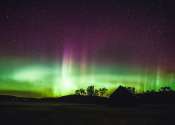The case for adding iron to the ocean for carbon dioxide removal
While the urgent reduction of carbon dioxide (CO2) and other greenhouse gas emissions is needed as the primary activity to curb climate change, there is broad agreement for the need to remove CO2 already in the atmosphere. ...









